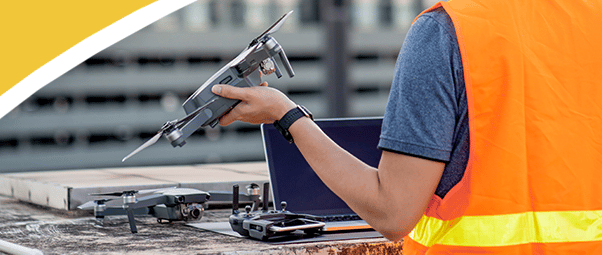New and emerging technologies in construction develop at a rapid pace, making for some major changes in bridge design. They offer engineers more accurate models and detailed analyses of bridges and other projects, making for more advanced construction methods and design software.
Here’s a list of some of our favorite advanced technologies in construction that are great for bridge design and construction!
Building Information Modeling (BIM)
Building Information Modeling (BIM) pairs architects with engineers and construction professionals. This allows for more efficient communication and collaboration throughout the stages of construction. BIM enables engineers and designers to create 3D models that include a bounty of data, from the physical characteristics of a bridge to its functional features.
MIDAS CIM, developed by MIDAS IT, is the world’s first BrIM (Bridge Information Modeling). This is an extension of a BIM that can generate instant and accurate outcomes for all phases of a project. It also provides an integrated platform that connects modelers, constructors, drafters, designers, and engineers in one sole model. It’s currently the only solution that can effectively reduce inefficiencies in cost, time, and communication that a design change can disrupt.
New Construction Materials
With new construction materials, the landscape of bridge construction is vastly different than it was decades ago. One of the newest and best materials for bridge design is self-healing concrete. Traditional concrete is highly susceptible to cracking. However, new concrete mixtures can fill themselves with the help of limestone-producing bacteria that can occupy the cracks of concrete as they form. This will prevent costly damage brought on by unfixed cracks.
Besides concrete cracks, natural disasters are a crucial aspect of consideration for bridge designers. Hurricanes, tornadoes, and earthquakes all impose irreversible damage to different structural elements of bridges. This is costly, however, the advent of new construction materials can skirt these costs.
One such material that is still under research is Superelastic Reinforcement, a shape memory alloy that can return to its original shape even after high stress.
Smart Construction
Smart technology is tremendously impacting the construction industry. This is because the likes of artificial intelligence (AI), virtual reality (VR), drones, site robots, and other construction techniques are now the new norm at every construction site. Bridge construction is no exception. With the help of LiDAR sensors and GPS tracking, bridge engineers can identify the precise location where a bridge will stand, thus greatly minimizing errors.
With today’s technologies in construction, it’s possible to keep track of anything and everything happening on bridges. For example, Kuwait’s Sheikh Jaber al-Ahmad Al-Sabah Causeway included the Supervisory Control and Data Acquisition (SCADA) in its bridge system. The system includes traffic cameras to track movements in the case of an emergency. It also incorporates systems for condition monitoring, and crack detection in its concrete and steel structures to provide overall structural health monitoring.
Computer-Aided Software
Bridge design gets more complicated and powerful as time goes on. Because of this, all-in-one computer-aided software programs are necessary. The software programs must be able to process complex modeling challenges and in-depth structural analyses.
Powerful software with a user-friendly user interface (UI) and intuitive modeling tools will allow bridge engineers to reduce modeling and analysis errors. This will provide a more accurate and reliable bridge design.
Build the Future with U.S. Bridge
U.S. Bridge uses the best materials and methods to create strong and reliable bridges quickly in the industry. We pride ourselves on our broad selection of prefabricated bridge styles and our signature bridge designs that can meet your project needs and leave a lasting impression.
Not to mention, our easy-to-use Bridgescope tool allows anyone to customize their bridge design and get a head start on their projects! Contact us today for any questions or bridge inquiries.




